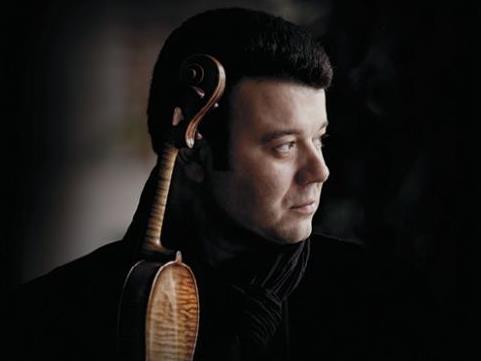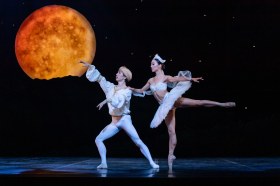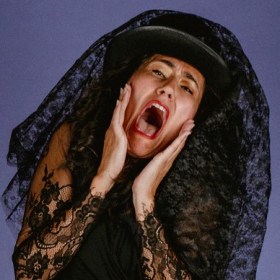Image: Vadim Gluzman; photograph courtesy of Melbourne Symphony Orchestra.
Commissioned by the MSO to mark the 400th anniversary of Shakespeare’s death this year, James Ledger describes his latest work as ‘an opera without words…four interludes’, each the inspiration of speeches by or about Shakespearean kings. The work is scored for standard orchestra but with the addition of a forward-placed electric guitar (Ken Murray) which takes the role of an accompanying ‘Elizabethan lute’. Placed in this contemporary context with multiple effect pedals, ‘wow-wow’ and distortion, however, it transports us back to 1980s rock and roll.
The four movements, Macbeth, Henry VIII, Richard III and King Lear are each Expressionistic soundscapes accompanying the selected texts. The composer allows for live narration, which might be preferable. On this occasion we heard a pre-recorded, unidentified actor. Receiving its second performance after the first was given the day before in Geelong’s Costa Hall, Hollow Kings was an underwhelming effort, mainly owing to its sporadic and episodic nature; it could well have been incidental music for film, carrying little compositional narrative, development or structure. Its musical language barely held attention. Despite a carefully attentive performance by the MSO and Sir Andrew Davis’s customary enthusiasm and energetic drive, this was a kite destined never to fly.
This unsteady start led to an insecure overall structure to the entire concert, as it then presented orchestral excerpts from Berlioz’s masterly dramatic symphony Roméo et Juliette, Op 17 and after interval Brahms’s Violin Concerto. Many audience members were left puzzling as to which was the major work.
Conceived as a new model of symphonic expression, Berlioz’s large-scale Shakespearian essay for orchestra, soloists and choir follows the composer’s creative exploration of form predicted by Symphonie Fantastique (1830) and Harold en Italie (1834). The work struggles for narrative coherence and buoyancy in its excerpted, purely orchestral manifestation though the Scherzo: Queen Mab or the Dream Fairy delighted for its precision, as did the ebullience of the Concert and Ball, Festivities of the Capulets’s Palace.
Performed last by the MSO only in November, Brahms’s Violin Concerto concluded the concert with a confident performance by Russian/Israeli violinist Vadim Gluzman playing a 1690 Stradivarius once owned by Leopold Auer, an instrument with a distinct lemon/citrus tone. He was warmly accompanied by the MSO with attentive co-ordinating attention to detail provided by Sir Andrew Davis. Gluzman negotiated well the work’s range of emotions from bombast to gentle introspection, though I thought at times his performance could have been more responsively heartfelt.
Rating: 3 stars out of 5
Gluzman Plays Brahms
Melbourne Symphony Orchestra
Sir Andrew Davis, conductor
Vadim Gluzman, violin
25 June 2016
Hamer Hall





